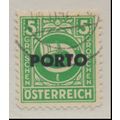Limassol, Cyprus - Basilica, Curium - postcard, stamps 1994
- Condition : Used
- Dispatch : 2 Days
- Brand : None
- ID# : 184386092
- Quantity : 1 item
- Views : 249
- Location : United Kingdom

- Seller : justthebook (+1703)
- Barcode : None
- Start : Sat 24 Aug 2019 05:07:07 (EDT)
- Close : Run Until Sold
- Remain : Run Until Sold
Checks/Cheques
 for 1 item(s) edit
for 1 item(s) edit
Shipping Calculator
More Listings from This Seller view all
Seller's Description
- Postcard
- Picture / Image: Basilica, Curium, Limassol, Cyprus
- Publisher: Mona Ltd., Nicosia
- Postally used: yes
- Stamp: Cyprus 10m Refugee + 15c Human Rights
- Postmark(s): 1994 cds
- Sent to: Great Crosby, Liverpool, England
- Notes / condition:
Please ask if you need any other information and I will do the best I can to answer.
Image may be low res for illustrative purposes - if you need a higher definition image then please contact me and I may be able to send one. No cards have been trimmed (unless stated).
------------------------------------------------
Postage & Packing:
Postage and packing charge should be showing for your location (contact if not sure).
No additional charges for more than one postcard. You can buy as many postcards from me as you like and you will just pay the fee above once. Please wait for combined invoice. (If buying postcards with other things such as books, please contact or wait for invoice before paying).
Payment Methods:
UK - PayPal, Cheque (from UK bank) or postal order
Outside UK: PayPal ONLY (unless otherwise stated) please. NO non-UK currency checks or money orders (sorry).
NOTE: All postcards are sent in brand new stiffened envelopes which I have bought for the task. These are specially made to protect postcards and you may be able to re-use them. In addition there are other costs to sending so the above charge is not just for the stamp!
I will give a full refund if you are not fully satisfied with the postcard.
----------------------------------------------
Text from the free encyclopedia WIKIPEDIA may appear below to give a little background information (internal links may not work) :
*************
Limassol (/ˈlɪməsɒl/; Greek: Λεμεσός [lemeˈsos]; Turkish: Limasol or Leymosun; Armenian: Լիմասոլ) is a city on the southern coast of Cyprus and capital of the eponymous district. Limassol is the second largest urban area in Cyprus, with an urban population of 160,000–176,700.[2][3][1] Limassol has been ranked by TripAdvisor as the 3rd up-and-coming destination in the world, in its Top 10 Traveler’s Choice Destinations on the Rise.[4][5] The city is also ranked 87th worldwide in Mercer's Quality of Living Survey (2015).[6]
Limassol was built between two ancient cities, Amathus and Kourion, and during Byzantine rule it was known as Neapolis (new town). Limassol's historical centre is located around its medieval Limassol Castle and the Old Port. Today the city spreads along the Mediterranean coast and has extended much farther than the castle and port, with its suburbs stretching along the coast to Amathus. To the west of the city is the Akrotiri Area of the British Overseas Territory of Akrotiri and Dhekelia.
The city of Limassol is situated between the ancient cities of Amathus and Kourion (Curium). Limassol was probably built after Amathus had been ruined. However, the town of Limassol has been inhabited since very ancient times. Graves found there date back to 2000 BC and others date back to the 8th and 4th centuries BC. These few remains show that a small colonisation must have existed which did not manage to develop and flourish. Ancient writers mention nothing about the foundation of the town. In 85 BC, Armenian emperor Tigranes the Great(Armenian: Տիգրան Մեծ Tigran Mets; Greek: Τιγράνης ὁ Μέγας Tigránes ho Mégas) had reached Limassol in order to establish security and protection of local Greek allies against Rome in a result followed by his conquest of Syria, Lebanon and Anatolia.
According to the Council of Chalcedon which took place in 451, the local bishop as well as the bishops of Amathus and Arsinoe were involved in the foundation of the city, which would be known by the names of Theodosiana and Neapolis.[7] Bishop Leontios of Neapolis was an important church writer in the 7th century. The records of the 7th Synod (787) refer to it as the bishop’s see. The town was known as Lemesos in the 10th century.
The history of Limassol is largely known by the events associated with the Third Crusade. The king of England, Richard the Lionheart, was travelling to the Holy Land in 1191.[8] His fiancée Berengaria and his sister Joan (Queen of Sicily), were also travelling on a different ship. Because of a storm, the ship with the queens arrived in Limassol.[8] Isaac Komnenos, the renegade Byzantine Greek governor of Cyprus invited the queens ashore, with the intention of holding them to ransom, but they refused. So he refused them fresh water and they had to put out to sea again or yield to capture. When Richard arrived in Limassol and met Isaac Komnenos, he asked him to contribute to the crusade for the liberation of the Holy Land.[8] While at the beginning Isaac had accepted, he later on refused to give any help. Richard then chased him and finally arrested him; the entire island was therefore taken over by the Anglo-Normans, bringing the long Byzantine dominion of Cyprus to an end.[9] Richard celebrated his marriage with Berengaria who had received the crown as queen of England in Cyprus. Richard destroyed Amathus and the inhabitants were transferred to Limassol.[8]
A year later, in AD 1192, Cyprus was sold for the sum of 100,000 bezants to the Templars, rich monks and soldiers whose aim was the protection of the Holy Sepulchre in Jerusalem.[8] The knights enforced high taxes, in order to get back the money that had been given for the purchase of Cyprus. This led to the revolt of the Cypriots, who wished to get rid of the bond of the promise. Richard accepted their request and a new purchaser was found: Guy de Lusignan, a Roman Catholic from Poitou. Cyprus was therefore handed over to the French dynasty of the house of Lusignan, thus establishing the medieval Kingdom of Cyprus.
For a period of about three centuries 1192–1489, Limassol enjoyed remarkable prosperity. Cyprus was characterised by its great number of Latin bishops. This lasted until the occupation of Cyprus by the Ottomans in AD 1570. Latin battalions which established monasteries were settled down there. The settlement of merchants in Cyprus and particularly in Limassol in the 13th century led to the financial welfare of its inhabitants. Its harbour as a centre of transportation and commerce, contributed greatly to the financial and cultural development.
- Postcard
Listing Information
| Listing Type | Gallery Listing |
| Listing ID# | 184386092 |
| Start Time | Sat 24 Aug 2019 05:07:07 (EDT) |
| Close Time | Run Until Sold |
| Starting Bid | Fixed Price (no bidding) |
| Item Condition | Used |
| Bids | 0 |
| Views | 249 |
| Dispatch Time | 2 Days |
| Quantity | 1 |
| Location | United Kingdom |
| Auto Extend | No |











![GRIECHENLAND GREECE [1953] MiNr 0601 ( O/used )...](https://pic.ebid.net/upload_small/2/4/5/1517070096-25175-4.jpg)









